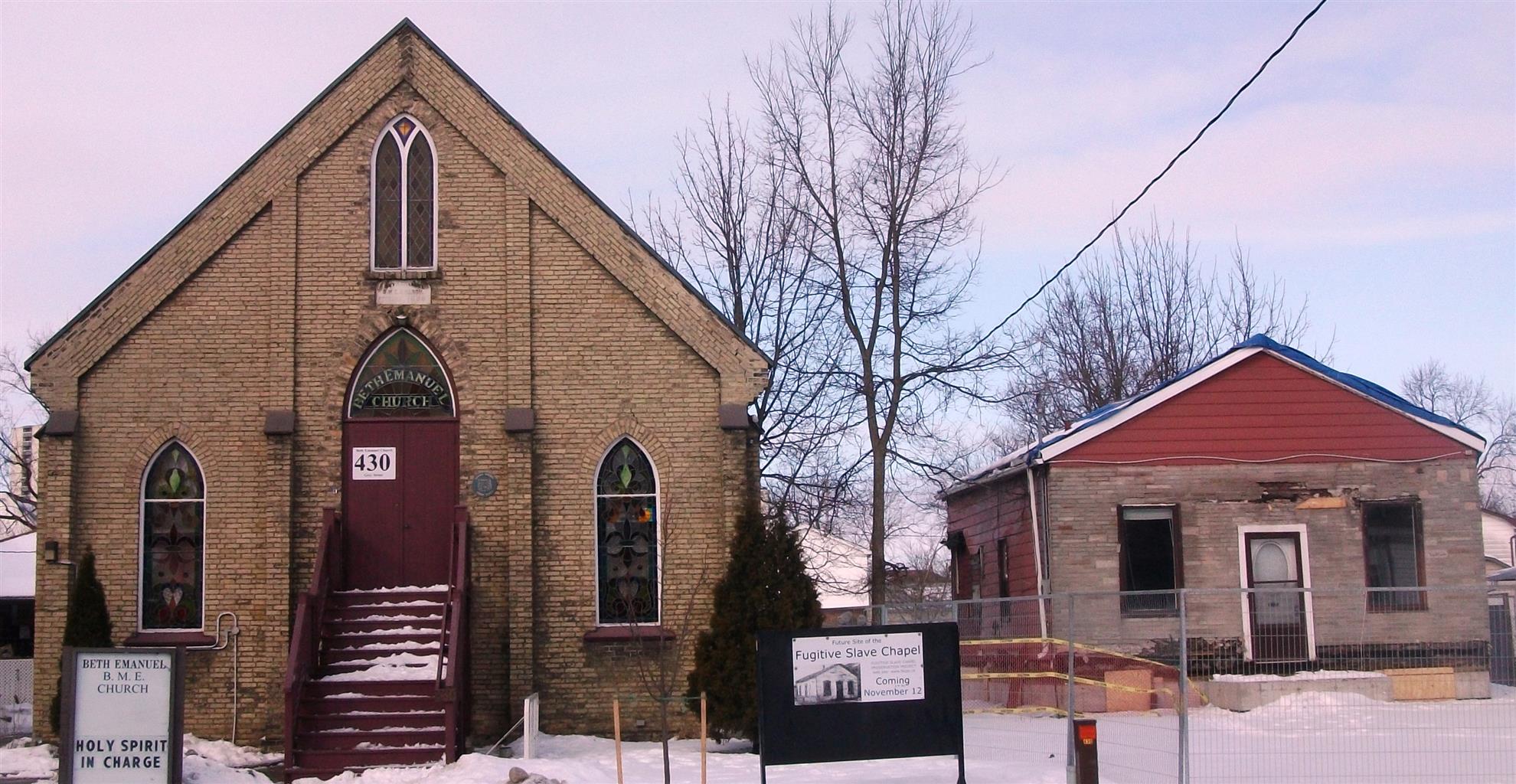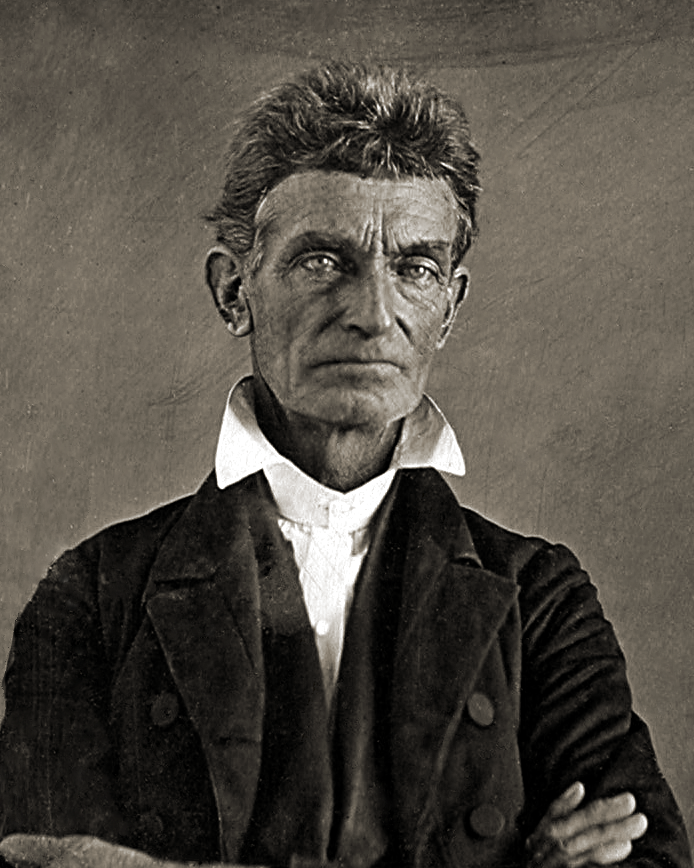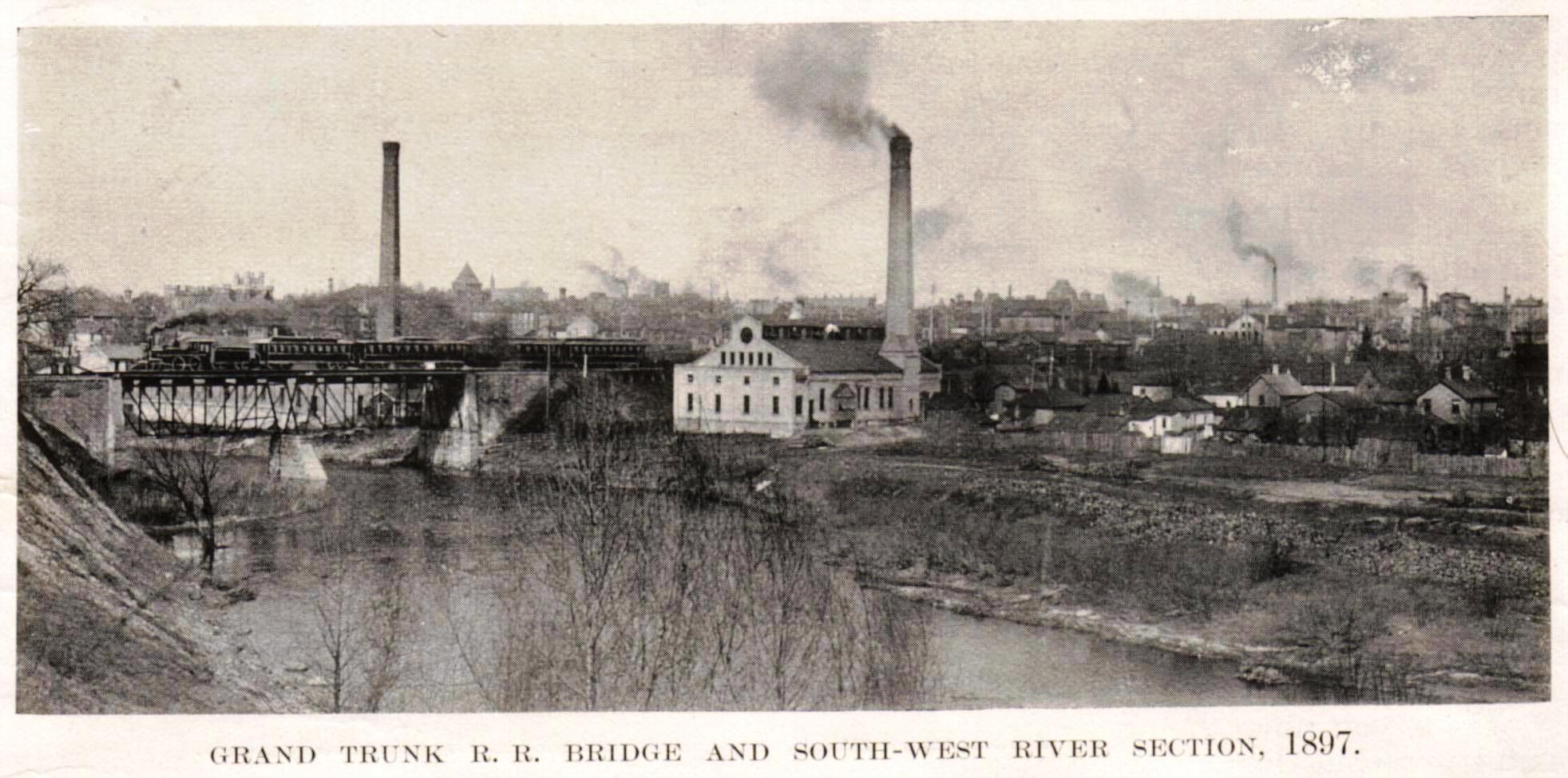Fugitive Slave Chapel Preservation Project
Posted by Kevin Webb
on Apr 09, 2015

Fugitive Slave Chapel at its new home next to Beth Emanuel Church on Grey Street.
George McNeish, immediate past Chair of the Fugitive Slave Chapel Preservation Project gave a very informative presentation on the history of the fugitive slave chapel, its connection to the Beth Emmanual Church and its value to the London community and the global community.
.JPG)
John McDonald presents our speaker, George McNeish, with the certificate donating $25 to The Rotary Foundation in his name
Fugitive Slave Chapel Preservation Project (FSCPP)
The Fugitive Slave Chapel Preservation Project was born in March of 2013 after news came out that the owner of 275 Thames Street wanted to tear the chapel down. On march 22 of that year the basement of Beth Emanuel Church was packed with people who did not want that to happen. Plans were immediately made to move the chapel to safer grounds beside the building that replaced it in 1869.
History:
Land was purchased on October 14, 1847 by the trustees of the African Methodist Episcopal Church for the construction of their place of worship. We believe the church would have been constructed the following year.

Link to Civil War in USA
In the summer of 1858 it is rumored that the abolitionist, Jhn Brown, spoke in the Chapel in an attempt to recruit an army to fight in his war against slavery. Although he was unsuccessful in recruiting anyone he may have raised some money that was used the next year in his raid at Harpers Ferry. Most experts agree that it was this raid that triggered the Civil War.

Underground Rail Road
One known fact is that London was a destination for those escaping slavery in the USA and that the Fugitive Slave Chapel was a place they met after a long and treacherous journey from the southern USA. In the USA before the Civil War, the black man had no rights and the fugitive slave act of 1850 made it even more dangerous for a black person living in the USA. Many free blacks also joined the fugitive slaves in their escape from injustice. The Underground Railroad was set up by abolitionists who did not agree with the slavery laws and helped the fugitives find their way to freedom. This railroad had no train and no tracks, but it was a series of safe houses known as stations and a lot of caring people known as conductors that gave aid to the fleeing fugitives.
Freedom at Last
Life was not easy for the Fugitive Slave in Canada. They were met with prejudice and were not made to feel welcome. In slavery they had to work for no pay and in Canada they were willing to work very hard for little pay. Thus, competing white workers would complain about them stealing their jobs. May would have been glad to have them sent back into slavery and some may have even helped the slave catchers who would attempt to kidnap them or otherwise lure them back to the USA. However, at least the letter of the law gave them some protection in their new home country. In practice, prejudice found its way into the legal system and usually the word of a white person would be taken over that of a black person. However, they did have the right to testify in court, which was a privilege denied them in the USA.
Although they were met with many hardships, they were finally free. This was enough to urge them through the hard times and they prospered while making a life for themselves in their new home. Due to a little luck and a lot of hard work, those in London did extremely well and, in 1897, Archie Bremner in his book, Illustrated London, states that the value of real estate owned by the black population was considerably higher than the average for the white population.

The Task at Hand
As we now engage in the restoration of this monument to an amazing people, we are left with many questions that are being answered and the need for help in many ways. Experts are needed that can research and investigate to let us know what the Chapel should look like to reflect its rich history. Workers are needed to carefully bring the edifice back to its 1848- 1869 appearance. Money is needed to pay for work and materials that don't get donated. It took an army of more than 550 people who donated time and money to our project to get the building moved. We know that they will not leave us stranded as we approach what will likely be the most important phase of our restoration project. It is our hope that our numbers will swell as more and more people realize the importance of the task at hand. The building is proving to give us a unique insight into the history of a people that the historians of the past did not perceive as being important enough to mention. We now realize their important contribution to the building of the City of London and our community would not be what it is today without their efforts. Since they were not documented in the past, it is now our duty to document everything we find so that future generations will know at least a little about this important part of London's history.

If the walls could speak!
The Fugitive Slave Chapel was brought home to 432 Grey Street (Next to Beth Emanuel Church) on November 12, 2014. Now, the most interesting phase of our project begins. The architecture of the building is being thoroughly examined as we determine the best way to accomplish an authentic restoration. Since we have a serious lack of documentation, we are doing our best to find out what the building itself can tell us.
We know that the land for the Chapel was purchased by the trustees of the African methodist Episcopal Church on October 14, 1847. We know that the building and land were sold on May 15, 1869 to be used as a residence. We know the names of everyone that owned the building since that time. But we do not know when and what renovations were done over the years.
Once the building is made safe we will begin to peel back layers until we find the original. Were the partitions original or added in 1869? We will need to ask the walls to answer that question. We find two different styles of floor boards. Was that original or was part of the floor replaced? If only the walls could talk to us and tell us what happened in that building, and perhaps they will. We have a unique opportunity to listen as none have listened before. What will the Fugitive Slave Chapel tell us about those who built it one hundred and sixty-seven years ago? It will be an interesting story to pass down to the generations that follow us.

Invitation to Participate
In 1848 a labourer would work 12 hours for one dollar. That works out to about 2 cents for 15 minutes work. Would you be willing to give us what you were paid for one coffee break? Our 2 cents work campaign is ongoing. You can give us your 2 cents work (or any amount you wish) by going to our web site and clicking the donations button. You may donate online (via pay pal) or send a cheque to Beth Emanuel Church, 430 Grey Street, London, Ontario, N6B 1H3. Please earmark for FSCPP.
More information at www.fscpp.ca
General inquiries: info@fscpp.ca
or call: 226-272-1363
Mail to:
Beth Emanuel Church
430 Grey St.
London, Ontario, Canda
N6B 1H3
